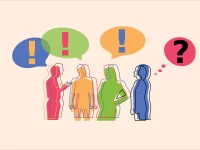For Matt Holdback, the symptoms started when he began shaking and sweating at the possibility of being called on in class, he wrote in a personal essay for the Selective Mutism Information & Research Association. When there was any confrontation, Holdback would try to get away with a small nod or a hand in the air — anything but making a sound. This is a classic set of symptoms for individuals experiencing a bout of selective mutism.
“Selective mutism is a condition that typically affects school-age individuals and is characterized as an inability to speak in social situations.”
Selective mutism is a condition that typically affects school-age individuals and is characterized as an inability to speak in social situations. When the pathology of selective mutism was first examined in the 19th century, they discovered that those with the disorder had a low threshold of excitability in the amygdala region of the brain. Although the symptoms of this disorder vary, some examples include enuresis, language abnormalities, shyness, withdrawal, and poor coordination. While some cases of selective mutism improve with time, others may undergo cognitive behavioral therapy (CBT) to “dampen” the strong emotions that often inhibit the individual from speaking through reflective introspection.
Exposure therapy is a form of CBT that starts with listing items that invoke anxiety and various stress responses. With each therapy session taking place in a safe and controlled environment, the individual is able to increase their sense of confidence and control.
In 2018, a pilot study was conducted by the Norwegian Research Counsel led by Beate Oerbeck. This experiment utilized CBT in home and school environments for 33 children. The treatment incorporated several techniques such as sitting beside, instead of opposite, the child, along with giving adequate response time. The results showed vast improvements, as all but one child spoke freely at school in a matter of 17 weeks. As a result, there remains optimism that individuals with selective mutism can still live fulfilling lives, as there remain multi-faceted solutions to each unique set of symptoms.


